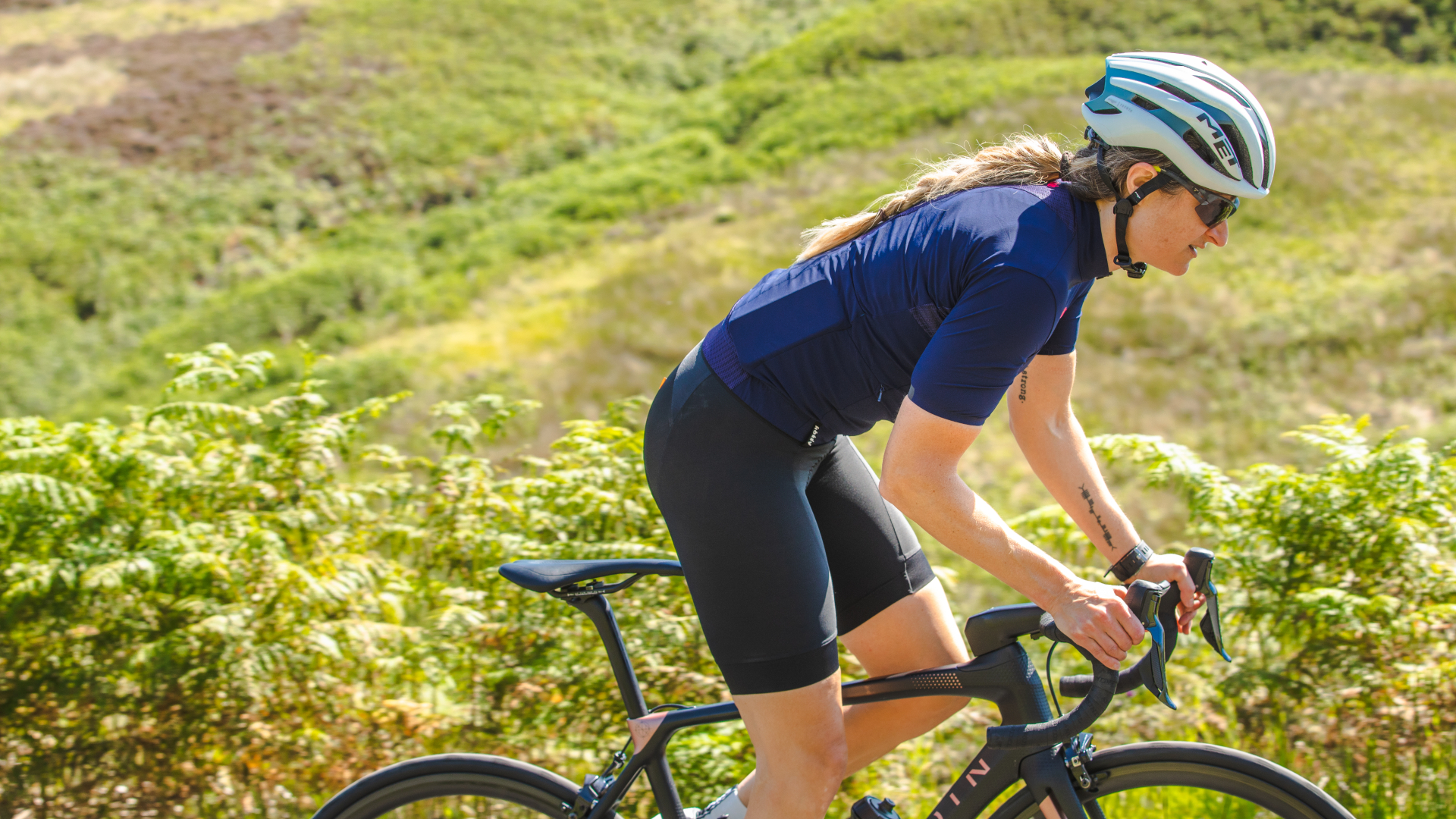Best commuter bikes 2025: for practical cycling on a daily basis
Our top-rated bikes for commuting to suit all styles, terrain and budgets, from traffic dodging drop bar bikes to car replacement cargo bikes

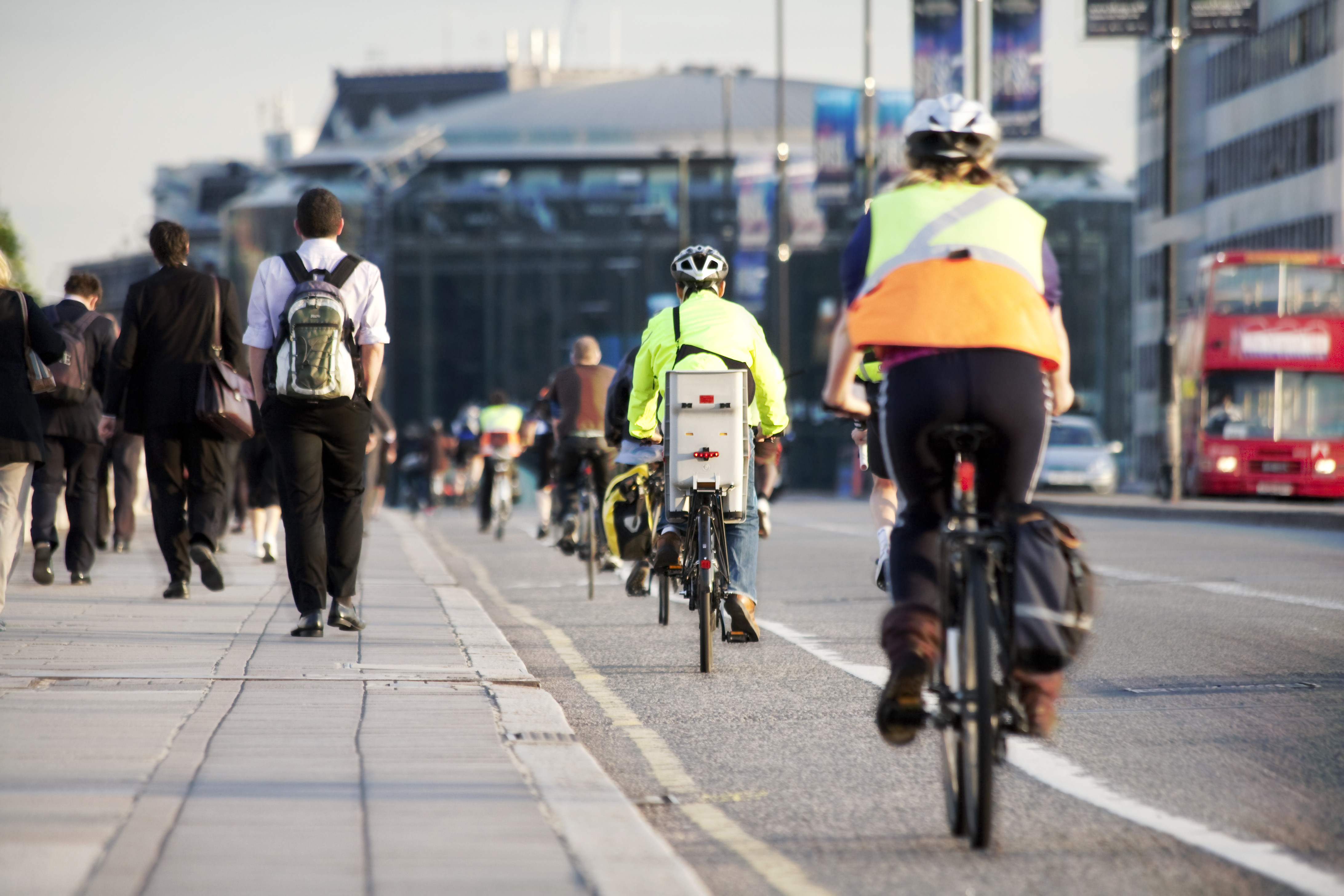
Commuting to work using one of the best commuter bikes can be a rewarding experience. The health benefits of cycling to work are well-documented, and if you’re training for an event, it’s a great way to get in some extra miles. Ditching the car can also save you money and be a wholly liberating experience. After all, who wants to get stuck in traffic after a day’s work?
So, how do you go about finding the right bike for your commute? Length of the journey and the terrain it covers will largely dictate your choices, as will the need to carry plenty of gear. You might even need to drop the kids off at school en route.
Fortunately, at Cycling Weekly, we’ve tested plenty of bikes that make ideal commuters, from the best folding bikes to the best electric bikes and best cargo bikes. We’ve selected our favourites, such as the Tern GSD S10 for its ability to be a proper car replacement, and top-rated bikes like the Whyte RHeO 3, for its versatility and engaging ride, to help you narrow down your choices and make an informed decision.
Selecting one of the best bikes for commuting is only half of the equation, though. Commuting is a demanding discipline and does, for better or worse, expose you to the traffic and the elements. So, it is worth checking out some of our other guides to get yourself fully equipped to tackle your cycle commute. For safety out on the road, consider one of the best commuter helmets and a set of the best bike lights. Don't forget that at some point, you might need to secure your bike; for that, one of the best angle grinder-resistant locks is the only way to go.
Quick menu
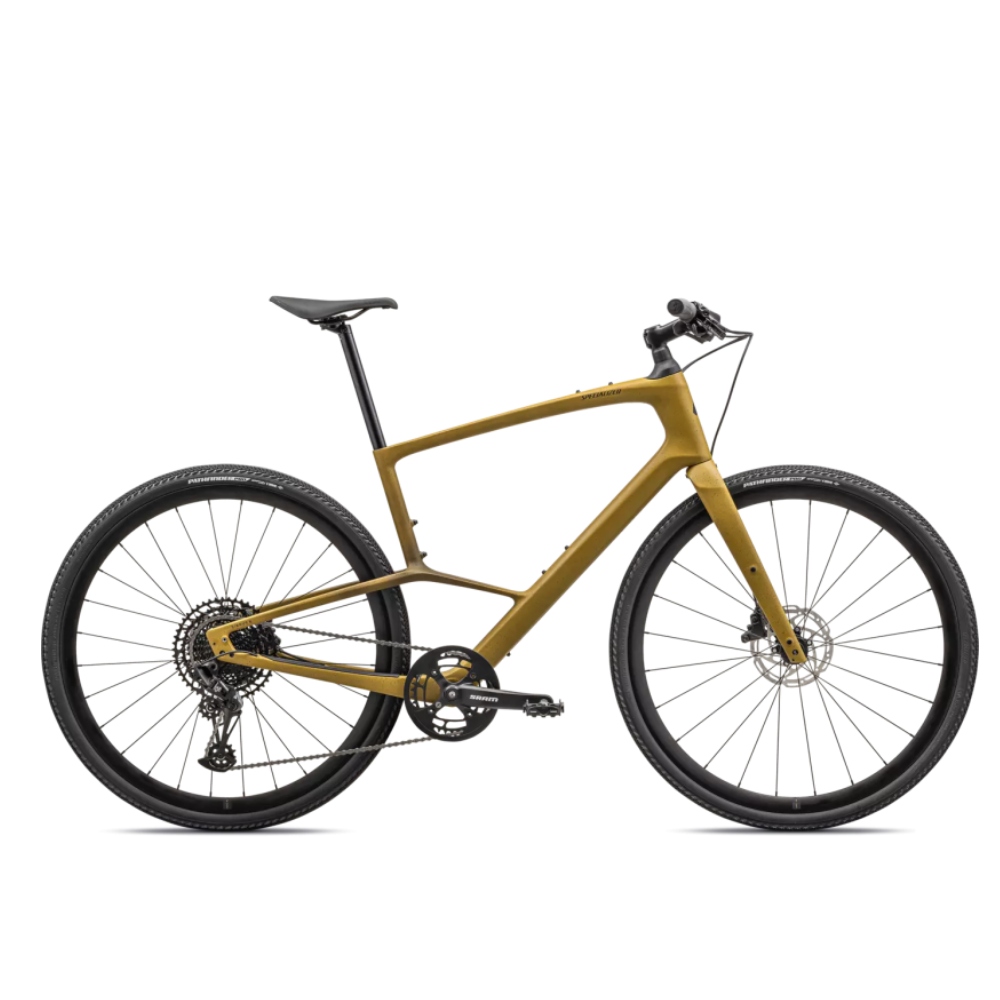
The Specialized Sirrus X 5.0 delivers comfort and speed through its carbon construction and radical frame design. Plenty of commuter-friendly mounts, too.
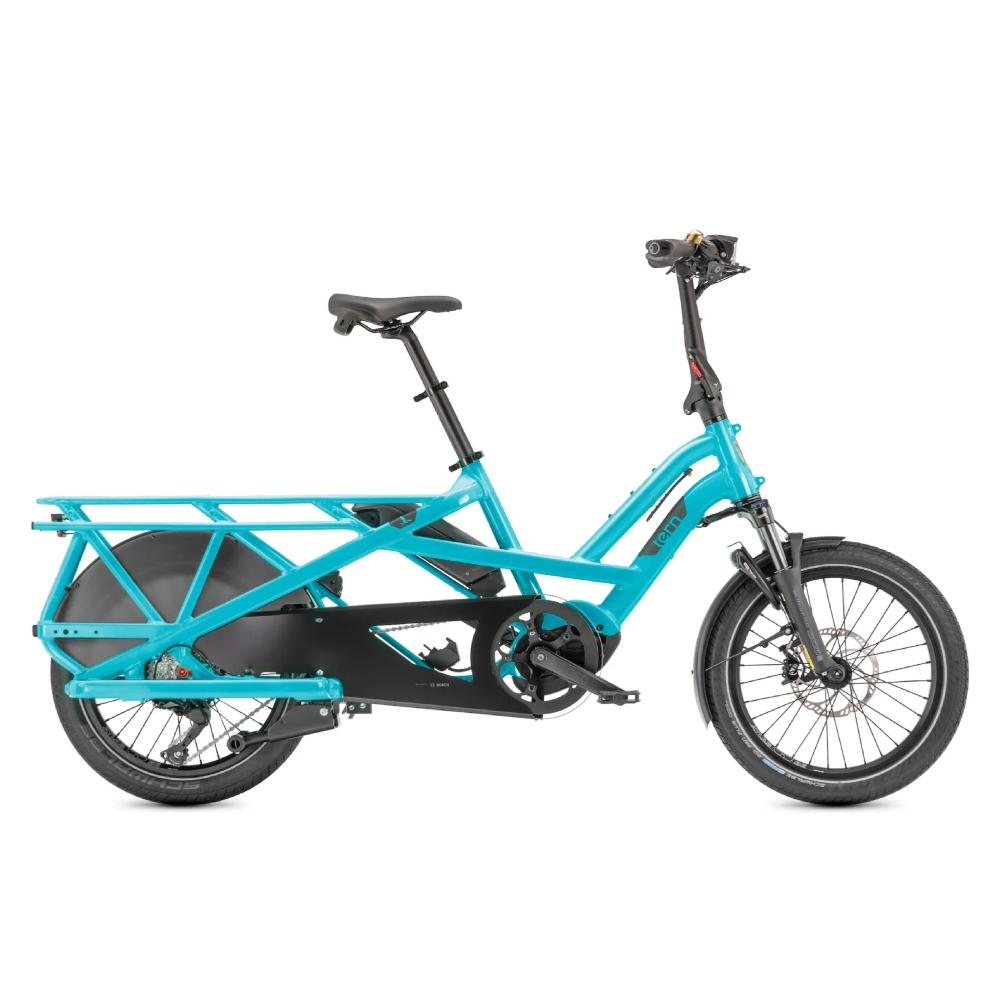
Tern really nailed the GSD S10. Plenty of storage and simple, well thought out features make this the dream cargo bike to live with everyday.
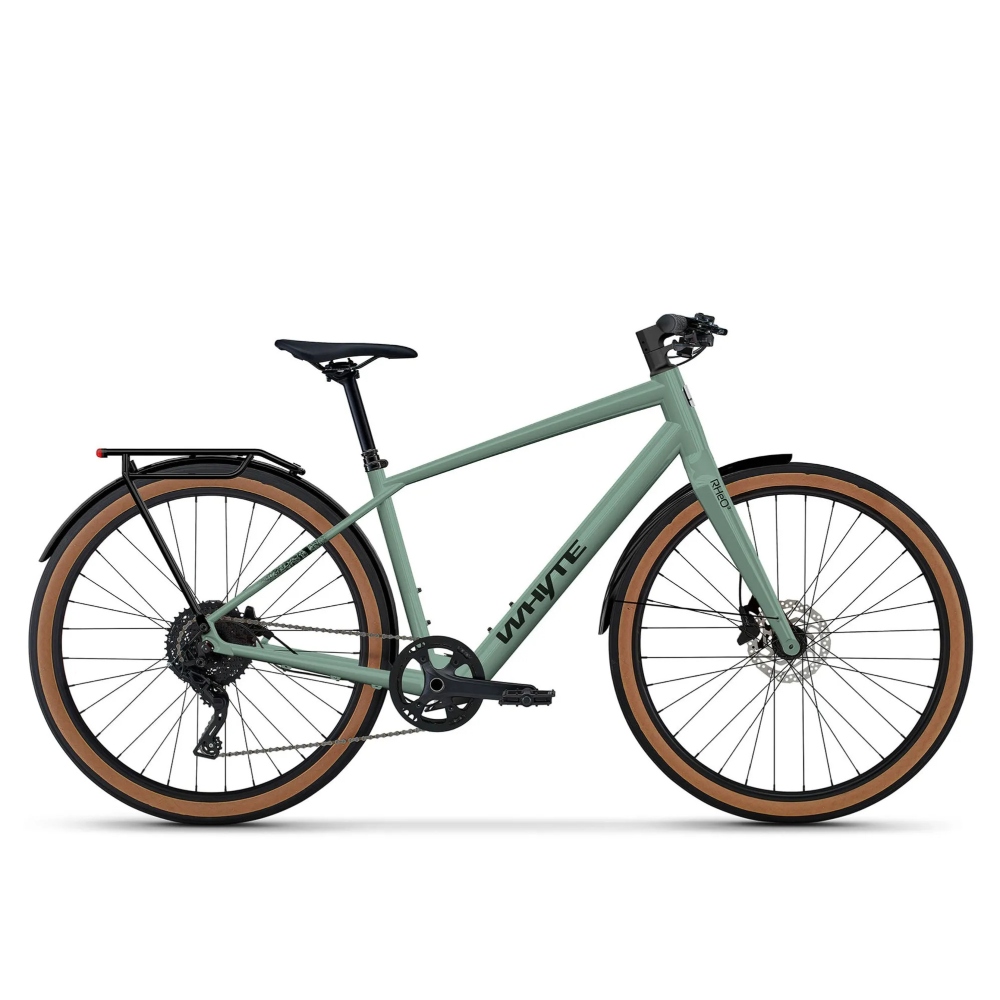
The Rheo 3 is lightweight and agile, with a rear hub motor that makes short work of hills. With fenders, rack and built-in lights, it's also ready to roll.

A singlespeed bike that's a great fit for flat rides or city commutes. Simplicity of use and ease of maintenance make it the most straightforward of commuting options.
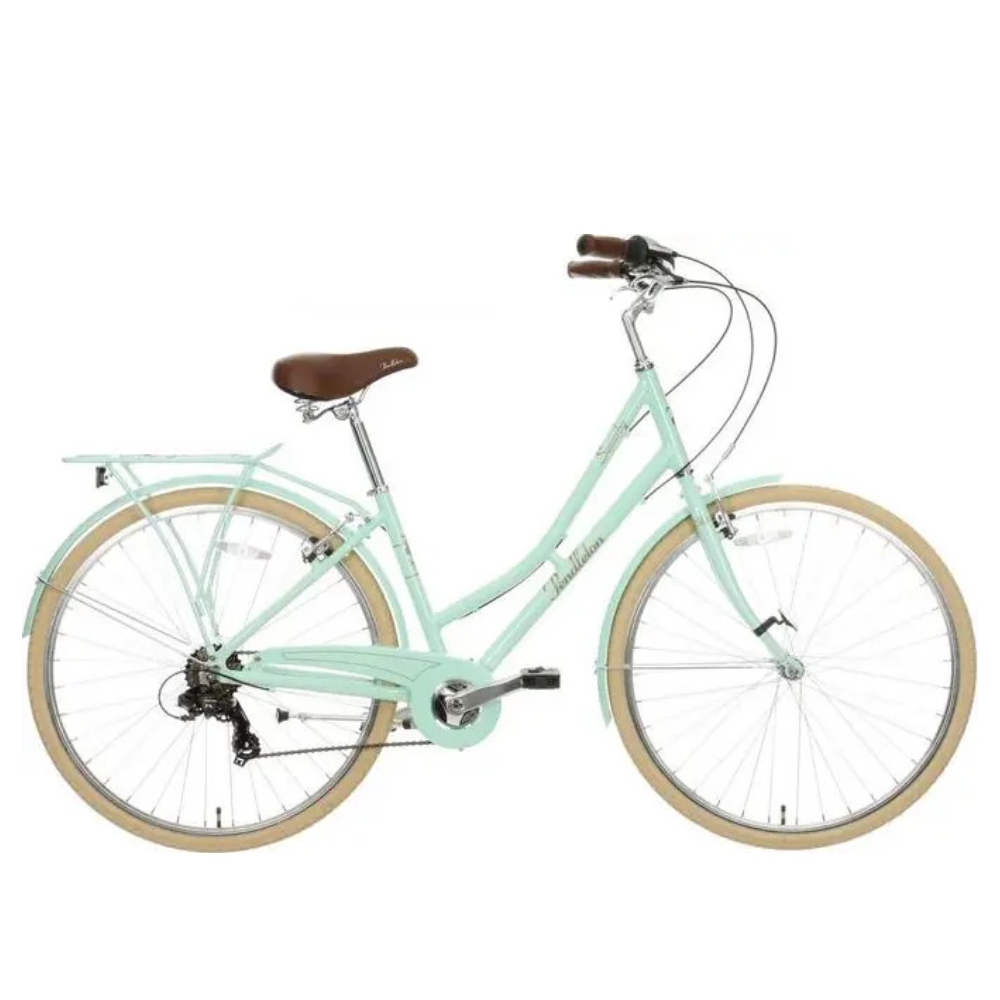
The cream tyres, leather details, and vintage style step-thru frame tick all the boxes for those looking for that classic Dutch style. Best suited for leisurely commutes.
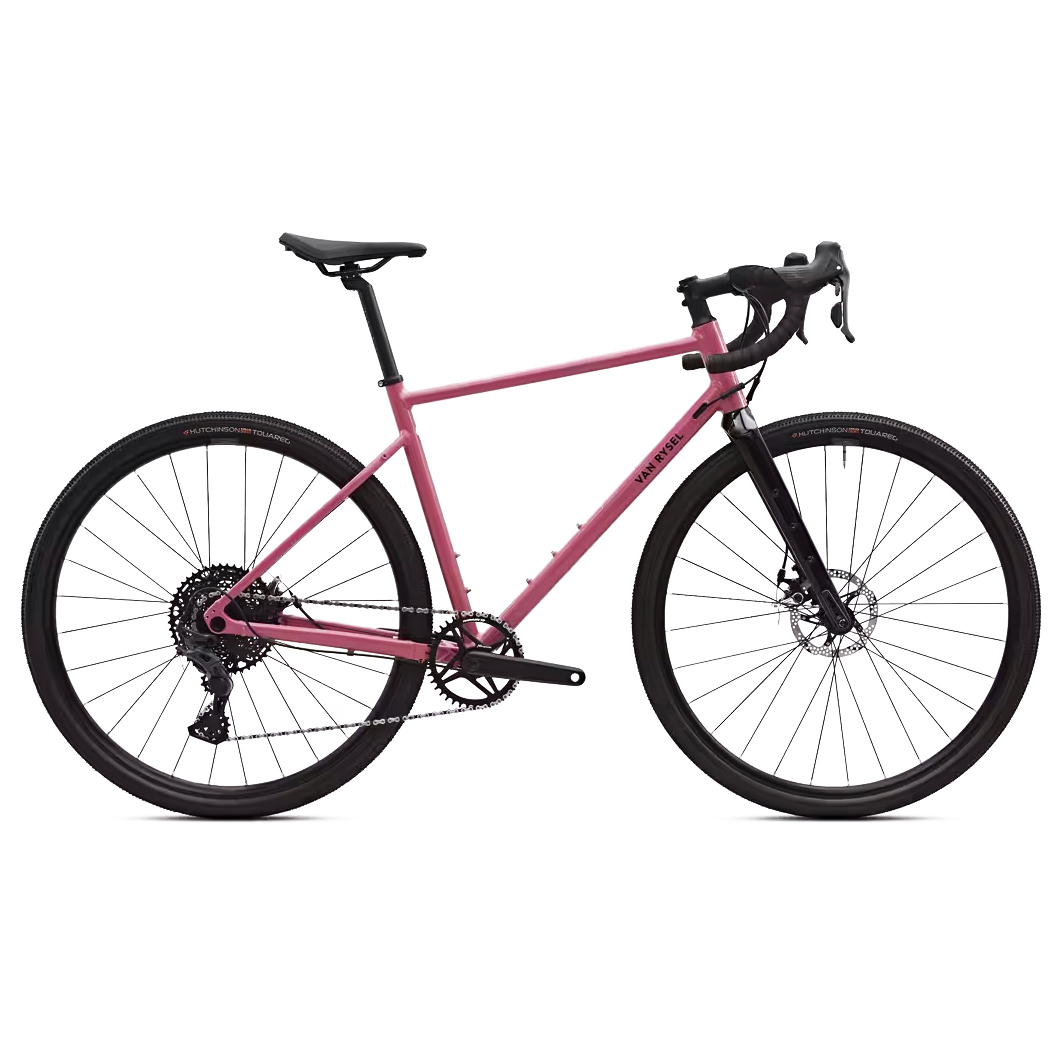
The Van Rysel GRVL AF 2 is pretty much everything you need in a commuter bike. It's well balanced, versatile, affordable and can pretty much have anything bolted to it.
Load three more of the best commuter bikes

The P Line uses a titanium rear triangle top to bring the bike's weight below 10kg. It can also be pushed in the folded position to make navigating train stations a little easier.
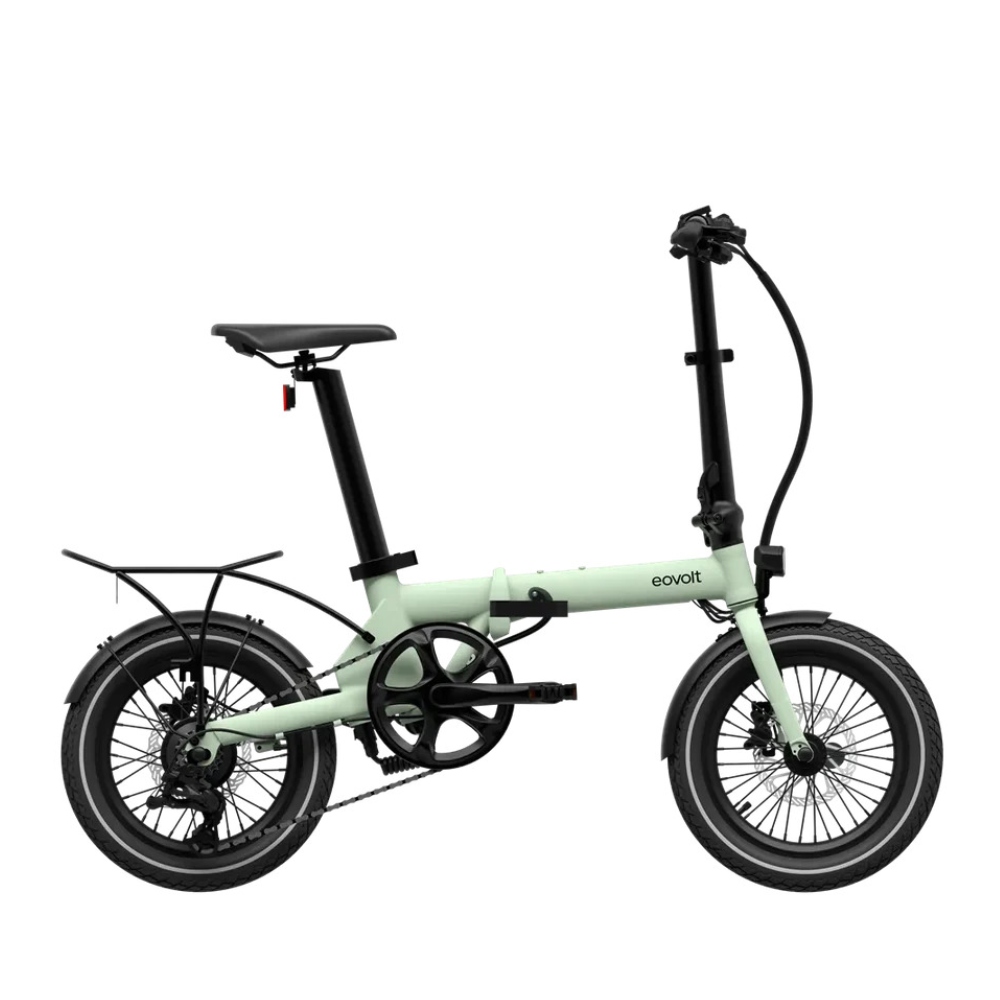
The rear hub motor ensures the Eovolt handles well, while the hydraulic disc brakes and robust tyres make it ready for year-round commutes no matter the weather.
Best bike for commuting; rated and reviewed by Cycling
Best hybrid for commuting
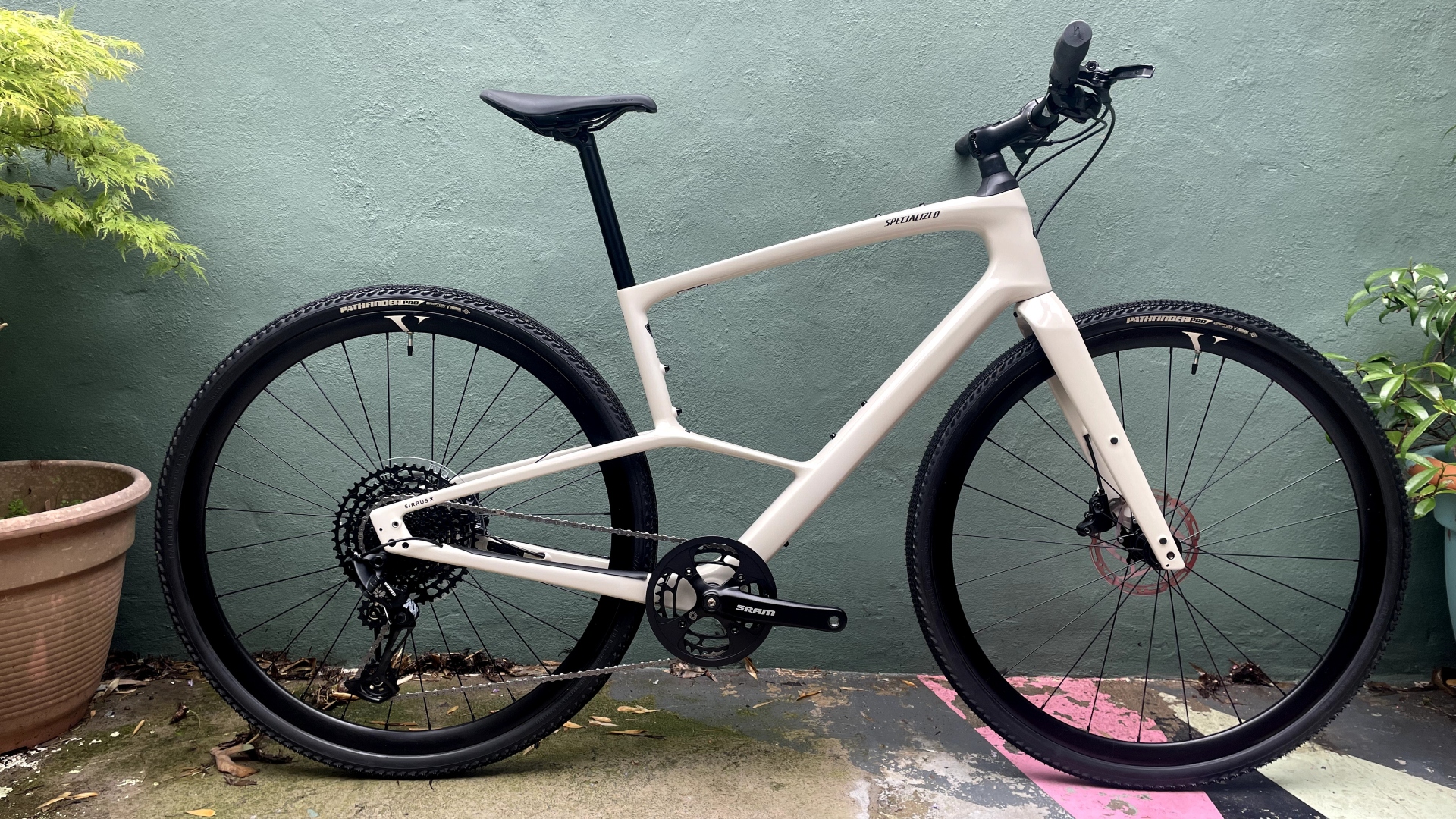
1. Specialized Sirrus X 5.0
Our expert review:
Specifications
Reasons to buy
Reasons to avoid
The Sirrus has been in production for five decades, making it something of an icon in the hybrid/commuter space. However, the X 5.0 is quite the departure from models of old, largely due to its radical frame design.
Using Specialized’s FACT 9r carbon, it features what’s called the Compliance Junction. Essentially this replaces the traditional seat tube with a design that creates a sizable hole between the rear seat stays (which actually start where the seat tube ends) and the bottom bracket. The idea? To add vertical compliance while retaining lateral rigidity, which in essence means more comfort and control.
The other headliner is the FutureShock 1.5 suspension that sits in the headtube, providing the Sirrus with 20mm of front end travel. Combined with the frame design and material it points to a bike that will soak up poor surfaces and reduce rider fatigue. The clearance for 42mm tyres won't harm this either.
In practice we found that it all worked as promised. The carbon frame helps to create a light and sprightly ride, with easy acceleration when required. But it was the bike’s comfort that shone through. We found there to be little chatter through the seat post or bars; the FutureShock proved a real success, delivering subtle but effective absorption that left us feeling fresh even after some off-road rides.
Sram’s 1x 12-speed drivechain also performed admirably. It’s admittedly a little clunky at times when it comes to shifting, but there were no missed shifts and the 11-50t cassette meant we were able to take on some pretty steep climbs while remaining in the saddle. That said, a three-piece crankset on a bike such as this is a little hard to swallow.
Indeed, much of the bike’s price tag is to be found in the frame, which means some of the components, such as the wheels and the above groupset are a little basic. That said it’s a frameset that’s worthy of plenty of upgrades over time. All told, it’s a well-designed and supremely comfortable high-end hybrid that lends itself to many applications, including a daily commute.
Read more: Specialized Sirrus x 5.0 full review
Best cargo bike
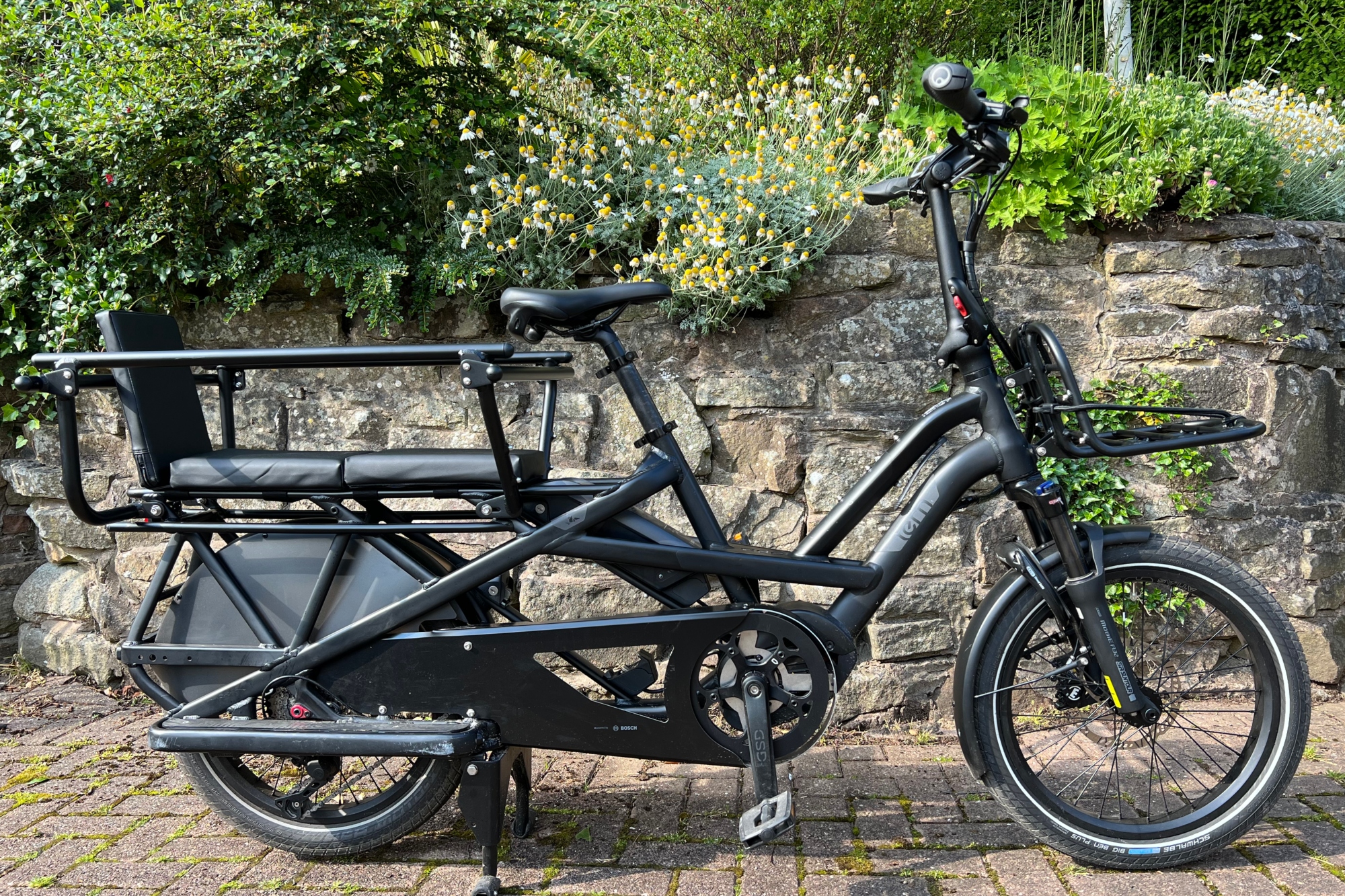
The Tern GSD S10 electric cargo bike
Specifications
Reasons to buy
Reasons to avoid
If you're looking for a bike that can truly replace a car then the Tern GSD S10 is the closest I have found. It's so versatile. With most cargo bikes I have tested you have to choose between carrying kids or shopping, but the Tern has room for both.
The superior Bosch Cargo system is perfect for the hilly topography of my local roads, especially when we are loaded up. The GSD I have been testing is equipped with a 400wh battery but if you can stretch to the LX model it’s increased to 500wh. This would be welcome upgrade, as my eight mile commuting loop consumes about a third of the battery. This is not a big issue, it just means I have to charge it everyday, rather than every other.
If I'm picky, the Bosch Purion display is a little low rent bearing in mind the cost of the bike. Particularly as it doesn't even feature a clock, which means I have to mount a phone holder, or remember to wear my smartwatch. It is a very minor detail in the grand scheme of things, on a bike that has truly changed our habits as a family.
Best electric bike for commuting
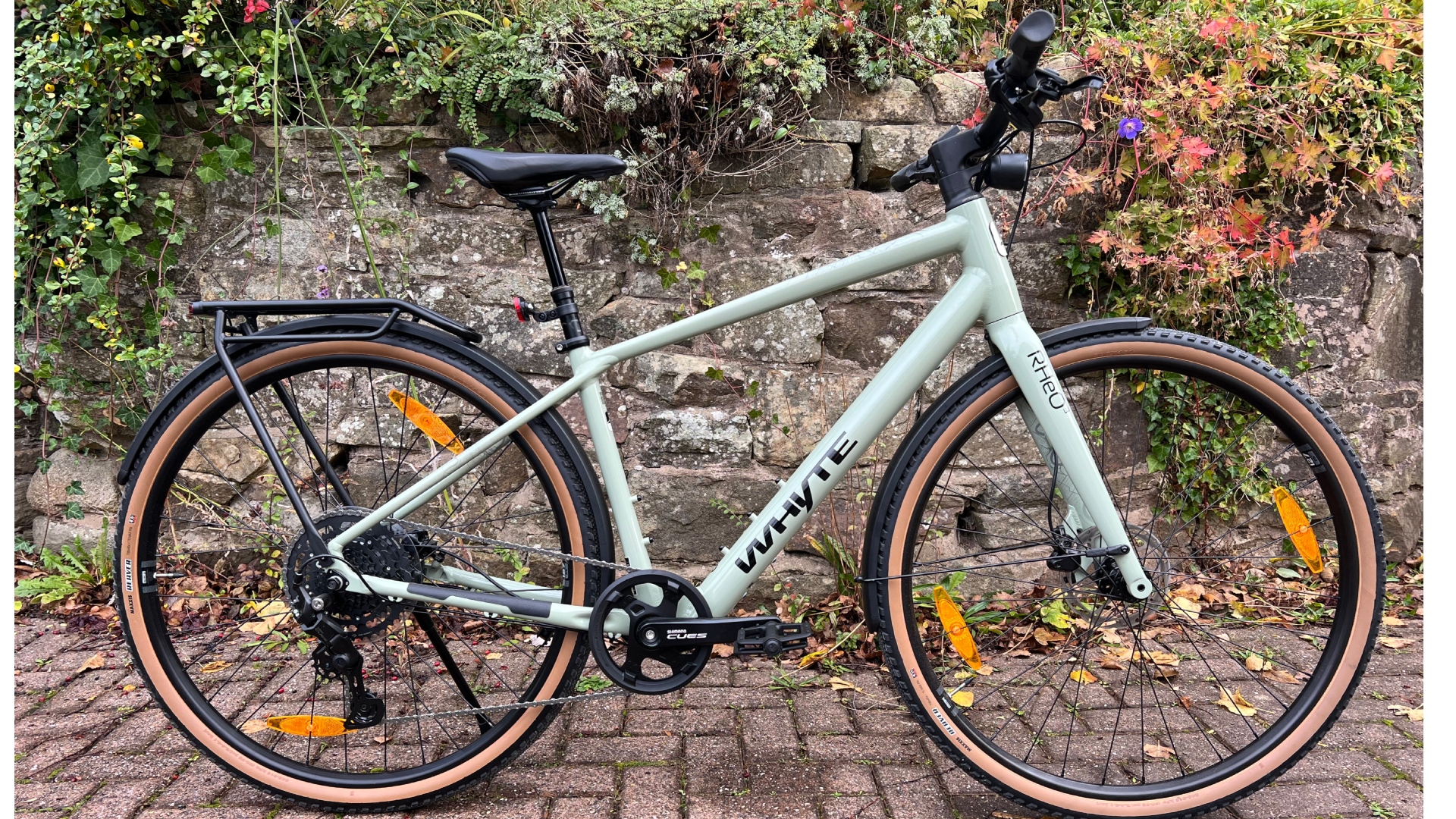
Specifications
Reasons to buy
Reasons to avoid
The lightweight Rheo 3 is powered by a 250Wh battery and a Kynamic hub motor that delivers 450W of peak power with 45Nm torque. The battery sits low on the bike’s down tube, designed to create a low centre of gravity and with it a sure and stable ride. And it works.
Combined with the chunky 45mm Maxxis Reaver Tan Wall tyres, we found that the Rheo 3 handled a variety of terrain with aplomb; tarmac, trails, flat roads and hills were all tackled with ease and comfort, despite the frameset having no suspension.
The combination of the nine-speed Shimano Cues drivetrain and the hub-based Kynamic motor worked a treat. We found that even over lumpy terrain level one or two of the three pedal assist options proved to be sufficient. We saved level three assist for the steepest climbs.
As a commuter we appreciated the Rheo’s integrated setup, which meant we didn’t have to concern ourselves with remembering to charge or attach lights, while the mudguards and rack ensure you're all set for poor weather and having plenty of carrying capacity if required; it also means two less aftermarket purchases.
While the small battery saves weight it does lessen the bike’s range to a degree. During hilly rides we found ourselves eating up the battery, using 75% of capacity within 20 miles. However, on flatter roads this isn’t the case, and we found that we could keep the battery at around 80% after a 10 mile commute.
Read more: Whyte Rheo 3 full review
Best singlespeed for commuting
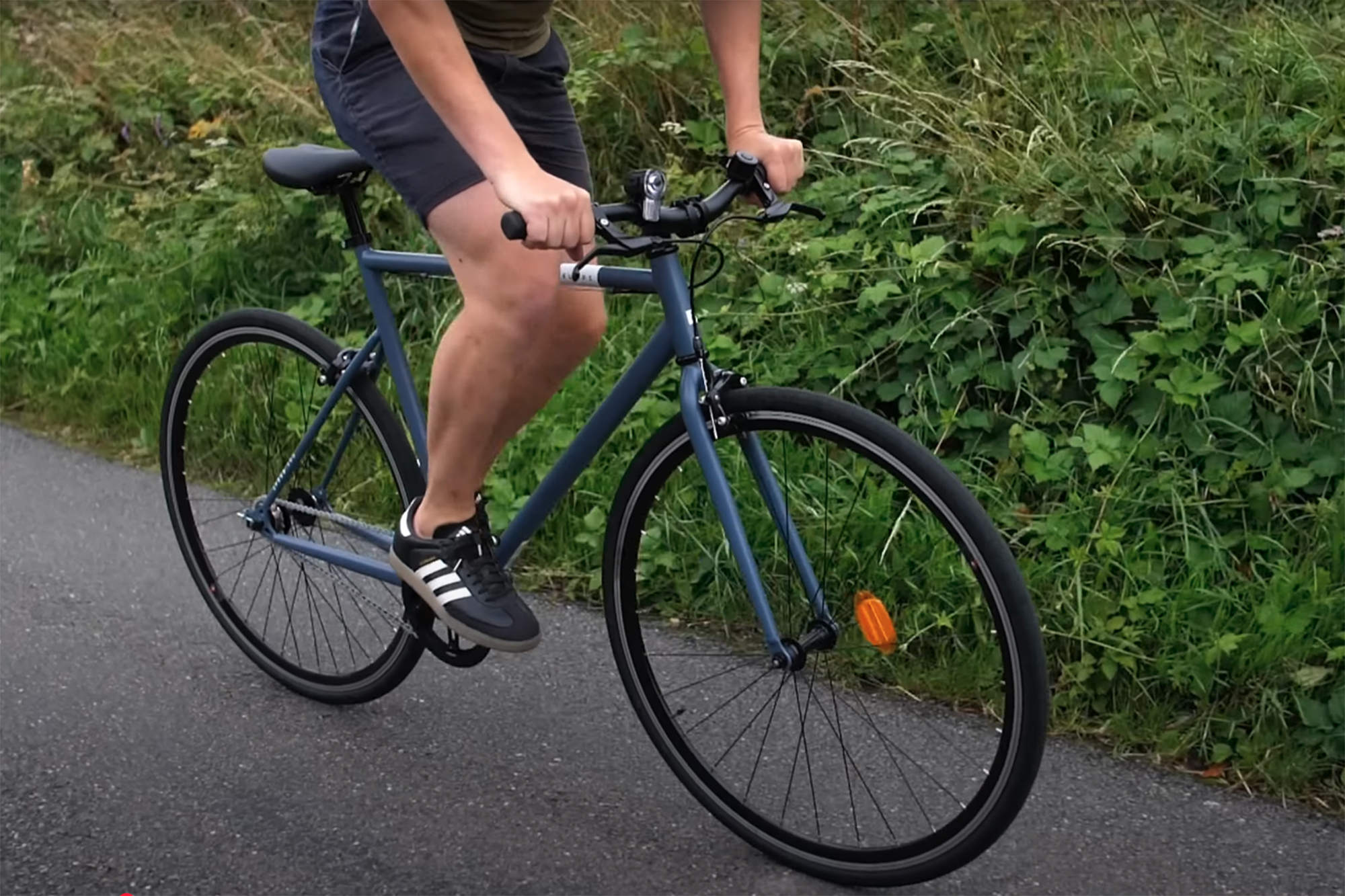
4. Elops 500 city bike
Our expert review:
Specifications
Reasons to buy
Reasons to avoid
Decathlon's Elops City Bike 500 was previously branded under its B'Twin label. However, the bike remains the same, which, if you're after a straightforward single-speed bike for your daily commute, is a good thing.
For under $/£300, you get a durable steel frame and forks that use dual-pivot calliper brakes to bring it to a halt. The gearing is 44x18, which means a single 44t chainring paired with an 18t cog - and it's fitted to a flip-flop hub, which gives you the choice of riding either with a freewheel or a fixed gear.
Best suited to short, flat commutes, the Elops single speed features relatively narrow 520mm alloy bars, which should allow you to navigate gaps in the traffic while still remaining stable. Given its price point and its steel frame, it's not the lightest bike you'll come across.
We reviewed the Elops as part of your Best Singlespeed Bikes group test video
Best Dutch style bike for commuting
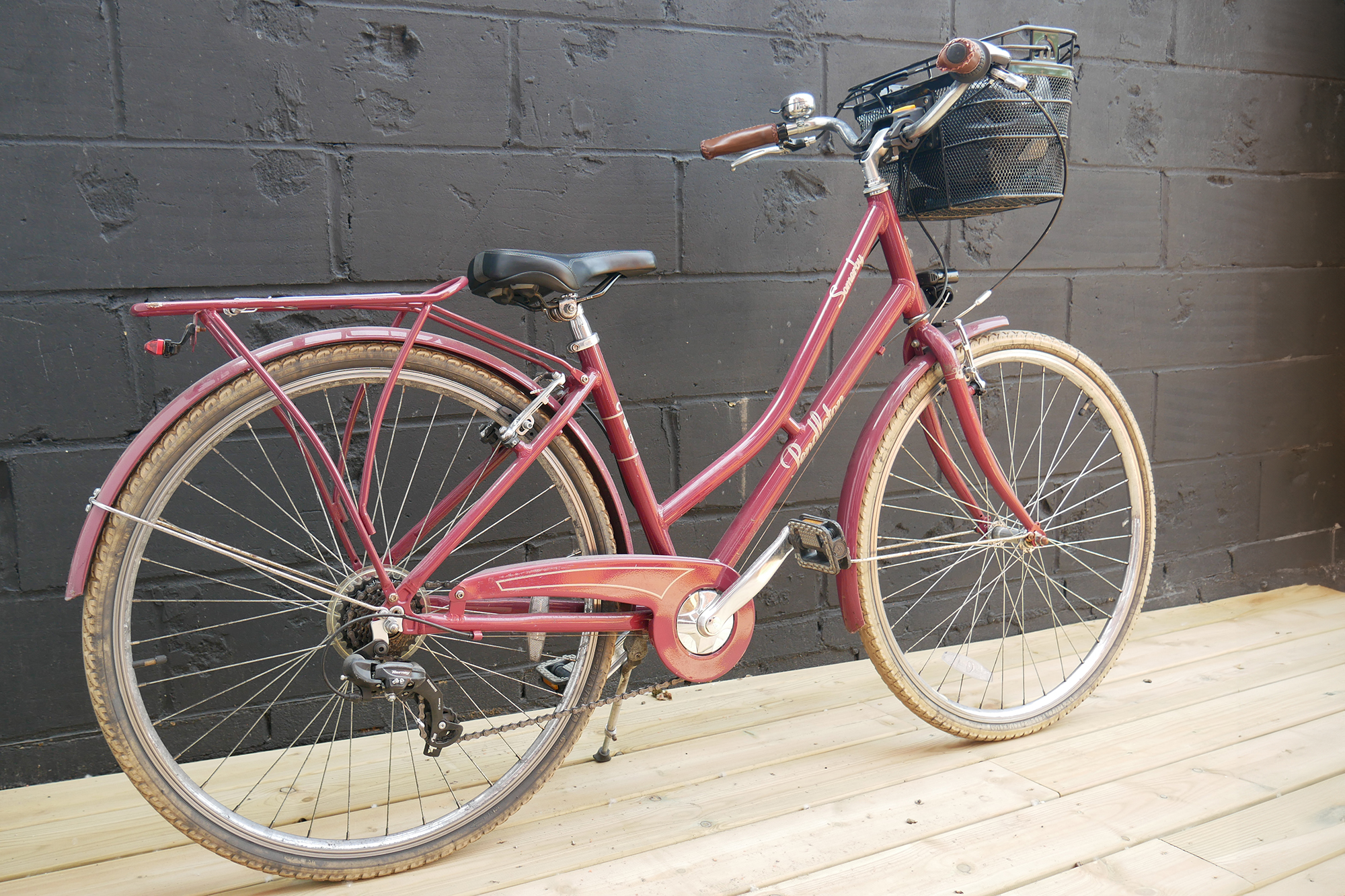
5. Pendleton Somerby
Our expert review:
Specifications
Reasons to buy
Reasons to avoid
Seeing near daily use for 2 years my wife's Pendleton Somerby has been flawless even after a few spills, one of which did result in a helmet replacement. The bike it replaced had proven very unreliable, not to mention a good 5kgs heavier. The Somerby really shows what can be done when a little thought is put into affordable bicycles and not a laser focus on cost. Details like the metal chain guard, mudguards and welded rack, have resulted in a quiet ride that has required no fettling to stop mudguards rubbing tyres or chains rattling on the guard.
At 14.5kg, the Pendleton isn't light by commuter bike standards however, for this style it is on the lightweight end. A Pashley Penny, a bike twice the price of the Somerby is in the 17kg range. That is in part due to Halford's choice to keep it simple with the 7-speed drivetrain from industry experts Shimano. The simplicity and weight saving of this set-up over a Sturmey 3 Speed hub is noticeable.
As the one that has to work on this bike, when it goes wrong, and the little spanner time I have given it. I would highly recommend the Somerby to anyone looking for an affordable, reliable and well-built bike. It is fantastic for short distances, and it has enough style to look good outside your local coffee roaster.
Best drop bar bike for commuting
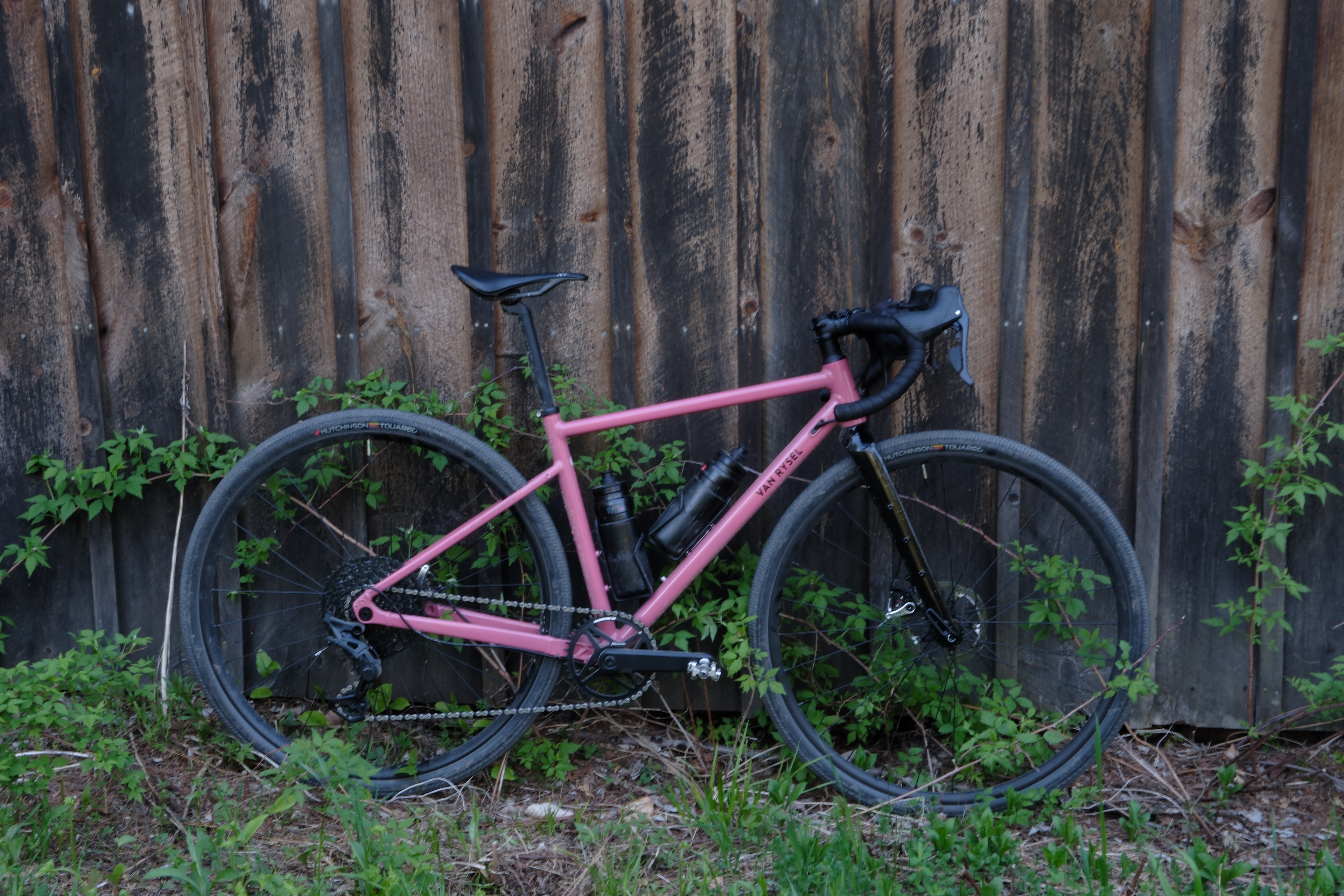
Specifications
Reasons to buy
Reasons to avoid
The first thing many will spot about the Van Rysel AF 2 gravel bike is its very affordable price, which is impressive given its specification. What isn't relieved until you swing a leg over is just how much bike you are getting for that money.
Decathlon has really played a blinder with the GRVL, impressing me with its ride quality too. It is remarkably comfortable to ride on a range of terrains, which I believe is down to its smart use of frame materials and well-balanced geometry. Not forgetting that the carbon fork and large volume tyres play a big part in this by offering a confident and forgiving ride.
Microshift's Sword drivetrain delivers excellent ergonomics and a really reliable shift. Given this was my first time with the budget groupset, it was a pleasant suprise. One area for improvement is the braking; however, considering that mechanical disc brakes are not expected to be as powerful, with proper care and time to break them in, the Tektro Sypres is a decent option.
The GRVL is no racer; however, its endurance feel makes for a great bike to explore with, log long endurance miles or given it has all the mounts, it could make a great commuter.
Read our full Van Rysel GRVL AF 2 gravel bike review
Best folding bike for commuting
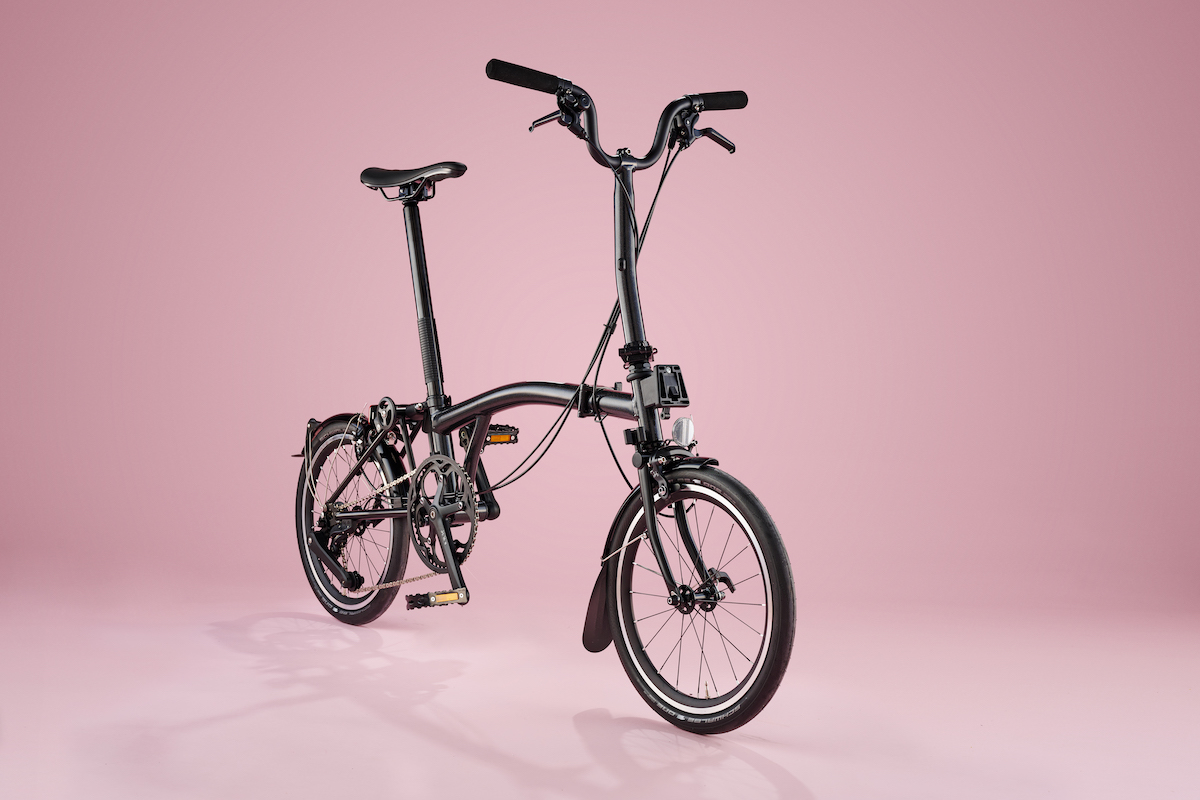
Specifications
Reasons to buy
Reasons to avoid
Brompton’s range of folding bikes is extensive but we’ve selected its P Line as the best option for commuting because of its weight. While the regular C Line models weigh over 11kg, the P Line, with its titanium rear triangle reduces this to well under 10kg. Given that many commutes with a folder involve a trip on public transport, this isn’t an insignificant saving, especially if you commute year round. And even if you cycle to work without the additional need of a train or bus, it makes it far easier to carry up any stairs you might face.
This lightweight construction is aided by the P-Line’s rollable nature; with the saddle up you can wheel it around, say a train station, with ease thanks to the seat pin locking mechanism that keeps the folded bike in place.
As for the ride quality, we found that it was suitably ‘Brompton’. The handling was nimble as ever, with any big hits from potholes and the like soaked up to some degree by the rubber suspension block, and the exceedingly long seat post. We enjoyed the upright riding position, providing us with good visibility when navigating traffic and busy streets. The brakes worked superbly well, too.
Read more: Brompton P Line full review
Best electric folding bike for commuting
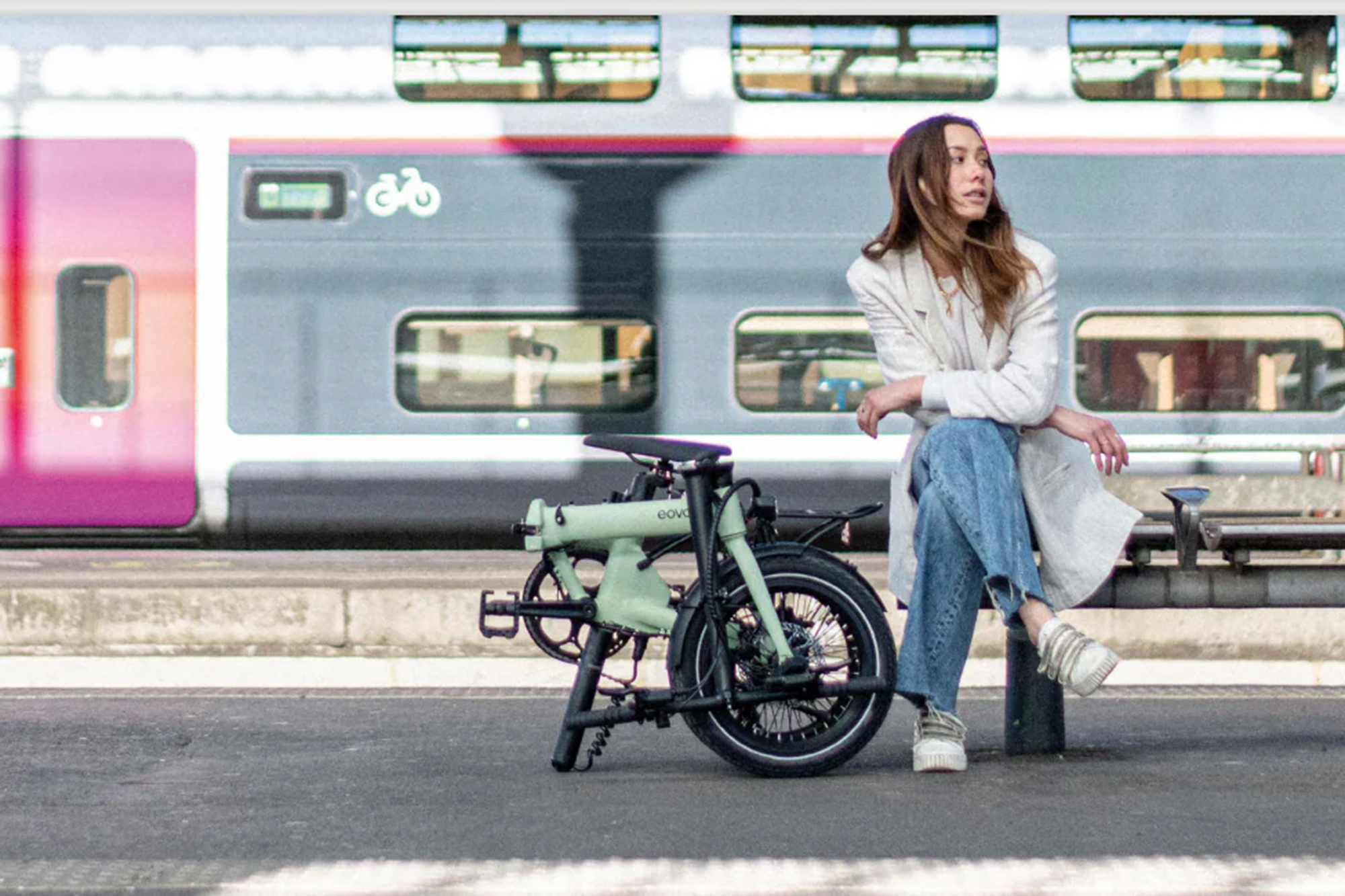
With a unique seatpost battery system and rear hub motor, the Eovolt afternoon 16 is our pick for commuting with a folding electric bike
8. Eovolt Afternoon 16 Origin
Our expert review:
Specifications
Reasons to buy
Reasons to avoid
We haven't done a full review of the Eovolt yet, but I was excited to compare the Eovolt Afternoon 16 with the Brompton Electric. So, I took the opportunity to pop into my local dealer to do a quick test ride. What caught my eye about the Afternoon 16 is that Eovolt has made two conscious decisions that immediately set it apart from Brompton.
The first is disc brakes, which offer superior braking for all-weather riding and when cycling in heavy traffic. Additionally, the added torque from an e-bike motor makes disc brakes essential on any e-bike. The second is Eovolt’s choice to spec a rear hub motor drive system. Without getting too deep into the pros and cons of hub-driven electric bikes, in my opinion, placing the hub in the rear eliminates undesirable handling qualities generated when the power goes to the front wheel. More importantly, it can be safer when the roads are damp or in an emergency. It's why market leaders like the Mahle X35 and FSA use a similar system.
The folded size of the Afternoon 16 also impressed, being only marginally bigger than its competitor at just 0.15m3, compared to 0.09m3 for a Brompton. To give some context, both are small but should easily be stowed in a car boot or train luggage bay. One issue that immediately arose during my short time with the Eovolt was getting the bike to stand independently when folded. This was a struggle. The round plastic protection at the end of the seatpost just isn't designed to support the bike. I only see it becoming an issue if you need to set it down while waiting on a platform for your train, if there’s nowhere else to lean it.
How we test
Our team of reviewers have extensive experience testing a wide range of bikes, components, clothing and more. Whether it's a race bike or a helmet, a pair of bib shorts or a set of gravel wheels, we ensure that we test the product thoroughly so we can give you as complete an understanding of how it performs in the real world as possible.
Regarding our testing of the best commuter bikes, the focus is on evaluating their ability to handle the rigours of a daily commute and assessing their overall ride quality. Commuting via bicycle can be tough on components, and wear is generally a lot higher than that used for leisure. There are several reasons for this, but generally speaking, it comes down to a less frequent maintenance cycle and greater exposure to the elements. Which means there is only one way to really test a commuter bike's full potential, and that is to put in heavy mileage.
With many of us here at Cycling Weekly remote and lacking a commute to an office, we instead get in our miles just like any other bike. This includes lunchtime rides, trips to the shops, dropping off the kids at school and nursery, and using the bike to get to the gym or a spin class instead of the car.
The expectation for every test is that each reviewer will have completed a dozen or more rides, using several configurations and over a number of terrains and in combination with a car or public transport.
All bikes will, of course, be assessed for their ride quality, versatility and overall value. More importantly, how easy they are to live with, how well do they actually work as a commuter bike. This will include any accessories that are provided or that are needed and can be fitted to the bike and how well they function.
You can read more on how the Cycling Weekly team go about our reviews on our dedicated How We Test page.
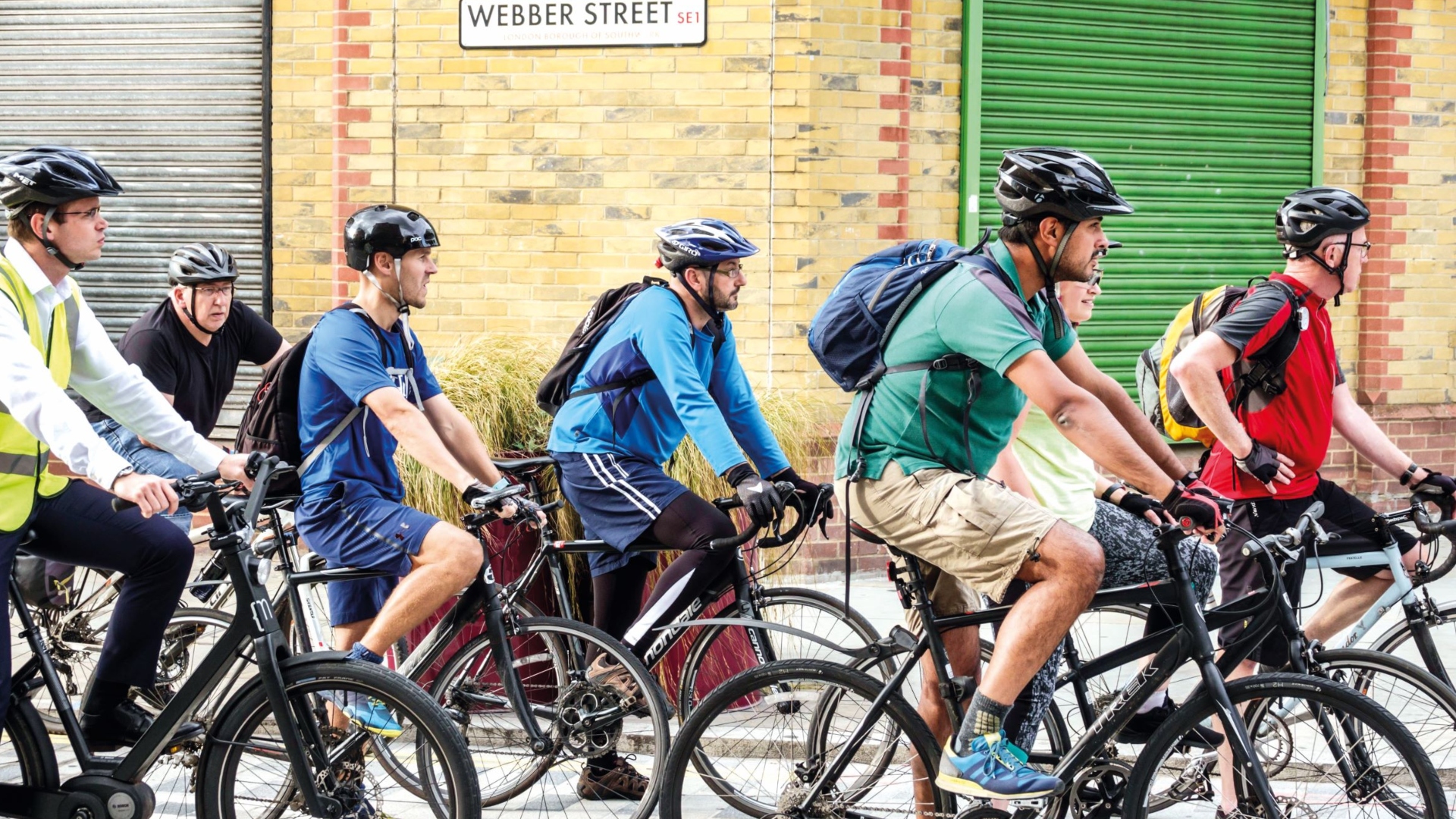
How to choose the best commuter bike for you
As I mentioned in the introduction to the guide, choosing the best commuter bike for you will very much depend on three factors:
- Length of your commute, and if this is in combination with a car or public transport
- The terrain which you will need to cover.
- Its versatility, does it need to carry children? Or will you use a backpack?
The ideal combination would be for a bike to do whatever you need it to. Although we're closer to that than ever before, one bike unfortunately doesn't rule them all.
Selecting the most likely combinations of what you need from the bike is the preferred ideal, and for those times you need something else, you have to make do. However, for each combination there are options.
For instance, if you have a long commute, a drop bar bike, such as a road or gravel bike, might be the best option. However, loading them up with laptops and other essentials isn't always easy. So, could you combine your commute with public transport or your car? In such cases, a more versatile folding bike might be a better option, as it is generally more equipped to carry bags and large lunches.
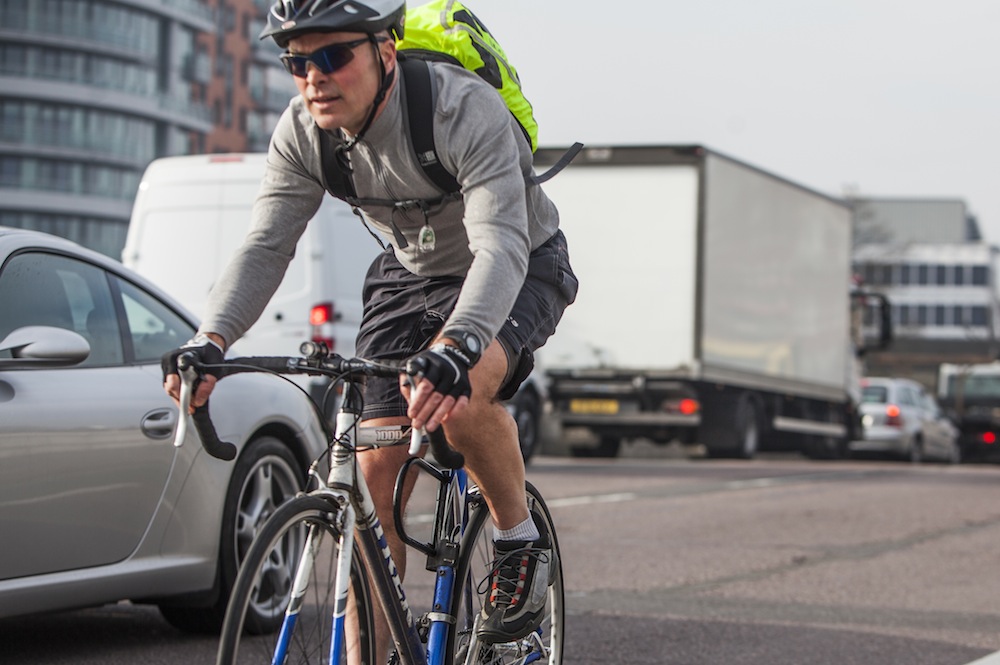
While some people tackle off-road in their commute, they are likely to be using one of the best gravel bikes or, potentially, one of the best electric bikes. Most of us will take on the commute on paved or hard-packed surfaces, mainly as arriving at work covered in mud and dust isn't ideal, but for many of us, we want to get to work or get away and to the next part of our day and seek out the fastest or quickest routes.
Where choosing a commuting bike can become a headache, though, is if the need to carry kids or other people becomes a priority. While the best electric cargo bikes make for excellent car replacements, not everyone will have space for those rather sizeable at times bicycles.
This is where using one of the best hybrid bikes in combination with the best kids seats or bikes like the Tern Quick Haul or GSD S10 makes for interesting propositions.
Needless to say, everyone has a slightly different approach to bike commutes, and if you break down the top priorities of your commute into distance, terrain, and what you need to carry, it can be much easier to find the right combination and ultimately the right bike.
FAQs about commuting by bike
What bike is best for cycling to work?
The topography of your journey will no doubt determine the bike you need to tackle your commute. For easy, flat or comfortable cycling, you could try a hybrid bike. For fast, longer-distance commutes a road bike might be better suited, or if you want to mix things up why not a gravel bike?
Take a look at our easy-to-use guide on what to look for in a commuter bike.
Is cycling a good way to commute?
Cycling to work has many potentials upsides. Naturally there's the physical health benefits of cycling, but there's also mental health benefits, too. And let's not forget the monetary savings over commuting by car or public transport is a dopamine hit in itself.
Is a 30-minute bike commute too long?
Our coaching expert James Spragg recommends “a commute under 30 minutes at a low intensity as the perfect addition to any training program”. For many, the duration of your commute will depend on the time you have available to cover the required distance. A half-hour commute featuring big hills requires a different effort from a 5km commute along a flat cycle path. If the distance is too far, a worthwhile consideration might be a folding bike and combining a cycle with a shorter car journey or public transport. Surprisingly in many cases, a cycle commute is quicker than one by car as it may feature a more direct route or lower traffic levels.
Are cyclists the happiest commuters?
The short answer is YES! A study by the University of Auckland has shown that cyclists are the happiest commuters. I attest to this, I am always happier on my bike than when I am forced to use the car. Just don't ask me in the middle of winter.
Are road bikes good for commuting?
Road bikes make for great commuter bikes. There is a tradition of using budget road bikes fitted with mudguards to get from A to B faster. However, road bikes can limit you to paved surfaces and this is where we have seen a recent rise in the popularity of budget gravel bikes. Their ability to run a much wider variety of tyre treads and widths, including road tyres if you wish, whilst maintaining efficiency makes them ideal for commuting.
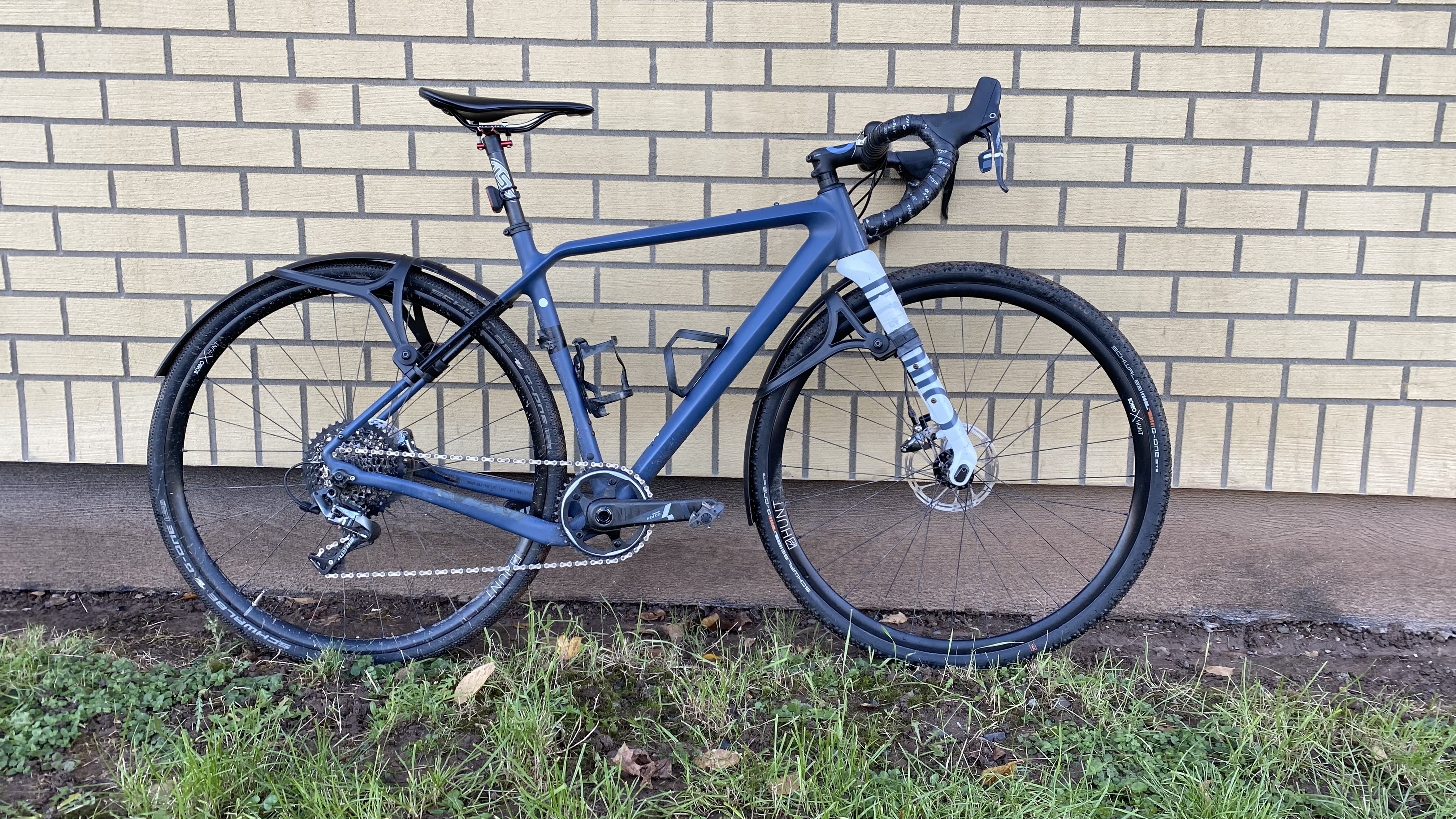
Can mountain bikes be used for commuting?
Any bike, including mountain bikes, can be used for commuting. The terrain you choose to travel across will determine the choice of bike. The monotony of cycling on the road eventually got to me, so I found mixing up my commute with some easy trails a great way to add variety. For many, a gravel bike might be the best of both worlds. They offer the ability to get off-road and mix up your route whilst maintaining an efficient commute time
The latest race content, interviews, features, reviews and expert buying guides, direct to your inbox!
Hannah is Cycling Weekly’s longest-serving tech writer, having started with the magazine back in 2011. She has covered all things technical for both print and digital over multiple seasons representing CW at spring Classics, and Grand Tours and all races in between.
Hannah was a successful road and track racer herself, competing in UCI races all over Europe as well as in China, Pakistan and New Zealand.
For fun, she's ridden LEJOG unaided, a lap of Majorca in a day, won a 24-hour mountain bike race and tackled famous mountain passes in the French Alps, Pyrenees, Dolomites and Himalayas.
She lives just outside the Peak District National Park near Manchester UK with her partner, daughter and a small but beautifully formed bike collection.
- Sonny EvansWriter
- Matt Ischt-BarnardEcomm and Tech Writer
